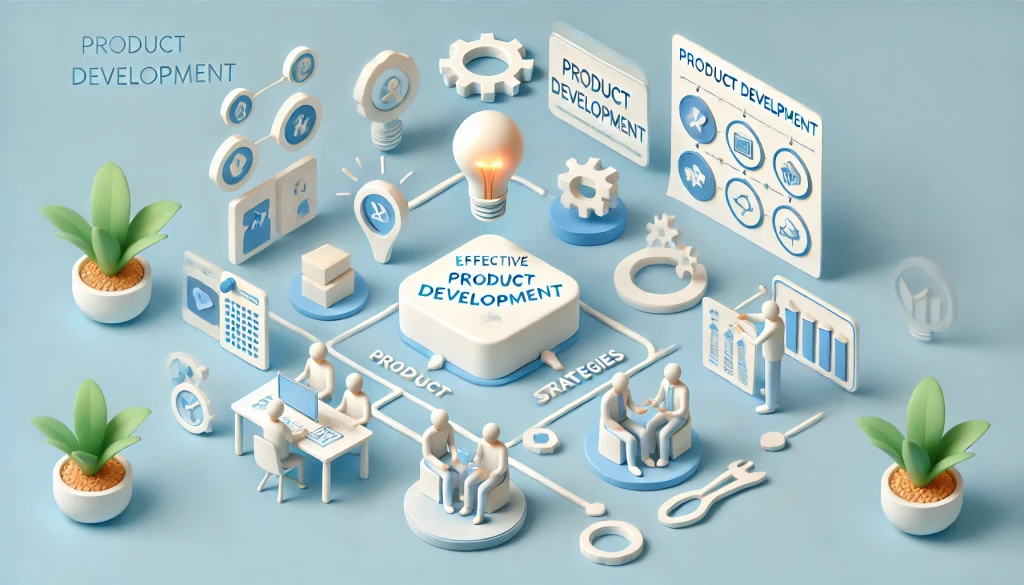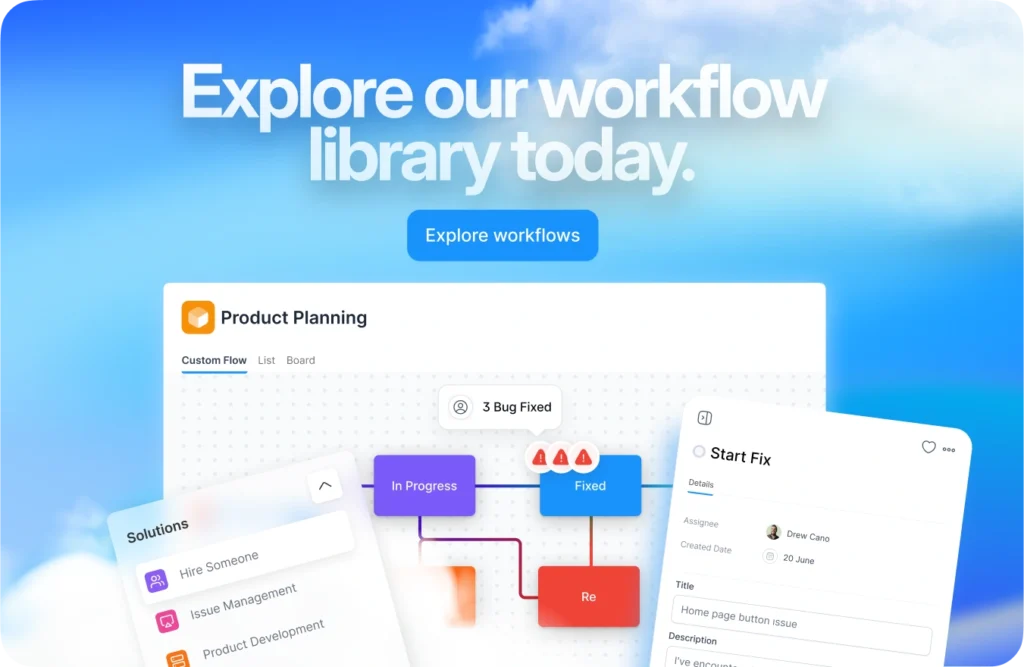What is Product Development? Definition & Examples

In today’s fast-paced business environment, product development is essential for bringing innovative solutions to market. Whether operating in B2C or B2B sectors, understanding product development helps companies stay competitive, meet customer needs, and drive growth. Product development is not just about creating new products; it’s about improving work performance and productivity at work.
We’ll explore the business definition model of product development and provide practical examples, particularly focusing on Peerbie. We’ll discuss how Peerbie uses project management tools, Kanban boards, and AI to enhance their product development process and ensure success in the marketplace.
What Is Product Development?
Product development is a multifaceted process that involves bringing a new product to market or enhancing an existing product to improve its functionality, performance, or market appeal. This comprehensive process can be broken down into several key stages, each critical to the successful creation and launch of a product.
Key Stages of Product Development
Ideation and Conceptualization: This initial stage involves brainstorming and generating ideas for new products or improvements to existing products. It includes market research, customer feedback, and competitive analysis to identify opportunities.
Design and Development: In this stage, the product concept is transformed into a tangible design. This includes creating prototypes, conducting design reviews, and iterating on the product design based on feedback and testing.
Testing and Validation: Testing is crucial to ensure the product meets quality standards and performs as expected. This stage involves various types of testing, including functional, performance, and user testing, to identify and address any issues.
Launch and Marketing: Once the product is validated, it’s ready for launch. This involves planning and executing a go-to-market strategy, including marketing campaigns, sales initiatives, and distribution plans to ensure a successful product introduction.
Post-Launch Evaluation: After the product launch, continuous monitoring and evaluation are essential to gather customer feedback, track performance metrics, and make necessary improvements or adjustments.

Who is Involved in the Product Development Process?
Product development is a collaborative effort that involves various stakeholders working together to bring a new product to market or improve an existing one. Key players typically include:
Product Managers: Responsible for defining the product vision, strategy, and roadmap. They ensure the product meets customer needs and business goals.
Engineers and Developers: Work on the technical aspects of product creation, including design, development, and testing. They bring the product concept to life through coding and building.
Designers: Focus on the user experience and interface design, ensuring the product is visually appealing and easy to use.
Marketing and Sales Teams: Develop and execute strategies to promote the product, attract customers, and drive sales. They handle market research, advertising, and customer outreach.
Quality Assurance (QA) Specialists: Conduct testing to identify and resolve any issues or bugs in the product, ensuring it meets quality standards before launch.
Project Managers: Oversee the project timeline, resources, and coordination among different teams to ensure the product development process runs smoothly.
Customer Support and Service Teams: Provide assistance to customers, gather feedback, and ensure customer satisfaction with the product post-launch.
Executives and Stakeholders: Provide strategic direction, approve budgets, and ensure the product aligns with the overall business objectives.

Product Development Strategies
Effective product development requires strategic planning and execution. Here are some key strategies that companies can employ:
Customer-Centric Approach: Prioritize customer needs and preferences by involving them in the product development process. Gather feedback through surveys, focus groups, and beta testing to create products that truly resonate with the target audience.
Agile Methodology: Adopt agile practices, such as Scrum or Kanban, to enable flexibility and iterative development. This allows teams to quickly respond to changes and continuously improve the product based on real-time feedback.
Cross-Functional Collaboration: Foster collaboration between different departments, including engineering, design, marketing, and sales. This ensures that all perspectives are considered, leading to a more holistic and effective product.
Innovation and R&D: Invest in research and development to explore new technologies, materials, and processes. Encouraging innovation helps in creating unique and competitive products.
Market Analysis and Competitive Benchmarking: Conduct thorough market research to understand trends, customer demands, and competitor offerings. Use this information to identify opportunities and differentiate your product in the market.
Prototyping and MVPs: Develop prototypes and minimum viable products (MVPs) to test concepts and gather early feedback. This approach helps in validating ideas and making necessary adjustments before full-scale development.
Risk Management: Identify potential risks and develop mitigation strategies. This includes technical risks, market risks, and financial risks. Having a risk management plan ensures that the project can proceed smoothly even when challenges arise.
Scalability and Future-Proofing: Design products with scalability and future advancements in mind. This ensures that the product can evolve and adapt to changing market conditions and technological advancements.

Examples of Product Development
To illustrate the concept of product development, let’s look at some real-world examples across different industries.
1. Apple iPhone:
Ideation and Conceptualization: The development of the iPhone began with the idea of creating a revolutionary smartphone that combined a phone, an iPod, and an internet communicator. Apple identified the need for an all-in-one device that offered a seamless user experience.
Design and Development: Apple’s design team worked on creating an intuitive and sleek design, while engineers focused on integrating advanced technologies such as a multi-touch screen and a powerful operating system. Iterative design and rigorous testing were key components of the development process.
Testing and Validation: Prototypes were extensively tested for functionality, usability, and performance. Feedback from internal and external testers was used to refine the product.
Launch and Marketing: The iPhone was launched with a high-profile marketing campaign that emphasized its innovative features. The product quickly gained popularity and set a new standard in the smartphone industry.
Post-Launch Evaluation: Continuous updates and new models were introduced based on user feedback and technological advancements, ensuring the iPhone remained a market leader.
2. Tesla Model S:
Ideation and Conceptualization: Tesla aimed to create a high-performance electric vehicle that offered long-range capabilities, advanced technology, and a sleek design. The goal was to revolutionize the automotive industry with sustainable energy solutions.
Design and Development: The Model S was designed with cutting-edge battery technology, a powerful electric drivetrain, and an elegant design. The development process involved extensive research and prototyping.
Testing and Validation: The vehicle underwent rigorous testing for safety, performance, and reliability. Customer feedback from early adopters helped refine the product.
Launch and Marketing: Tesla launched the Model S with a focus on its unique selling points, such as long range and high performance. The company used both traditional and digital marketing channels to reach potential customers.
Post-Launch Evaluation: Tesla continuously updates the Model S with software improvements and new features, maintaining its competitive edge in the market.
3. Netflix Streaming Service:
Ideation and Conceptualization: Recognizing the shift in consumer behavior towards online streaming, Netflix decided to transition from a DVD rental service to a streaming platform. The goal was to provide a vast library of content accessible from anywhere.
Design and Development: The development team focused on creating a user-friendly interface and robust streaming infrastructure. The service was designed to offer personalized recommendations based on user preferences.
Testing and Validation: Beta testing with a select group of users helped identify any issues and refine the user experience. Continuous feedback was crucial for improving the platform.
Launch and Marketing: Netflix launched its streaming service with a strategic marketing campaign, highlighting its extensive content library and convenience. The service quickly gained traction and became a dominant player in the entertainment industry.
Post-Launch Evaluation: Netflix continuously updates its platform with new features and content, driven by user data and market trends.
4. Dyson Airblade Hand Dryer:
Ideation and Conceptualization: Dyson aimed to revolutionize the hand-drying experience by creating a high-speed, energy-efficient hand dryer. The goal was to provide a faster and more hygienic solution compared to traditional hand dryers.
Design and Development: The Airblade was designed with a powerful motor and innovative air-blade technology. The development process involved extensive research and prototyping to achieve the desired performance.
Testing and Validation: The hand dryer was rigorously tested for efficiency, hygiene, and durability. User feedback was used to make necessary adjustments.
Launch and Marketing: Dyson launched the Airblade with a focus on its unique features, such as fast drying time and energy efficiency. The product was marketed to commercial and public spaces.
Post-Launch Evaluation: Continuous improvements and new models were introduced based on user feedback and technological advancements.
5. Nest Learning Thermostat:
Ideation and Conceptualization: The idea was to create a smart thermostat that learns users’ behavior and preferences to optimize energy use and enhance comfort. Nest Labs aimed to combine advanced technology with user-friendly design.
Design and Development: The thermostat was designed with a sleek interface and smart learning algorithms. The development process involved extensive testing and iteration to perfect the product.
Testing and Validation: The Nest thermostat underwent rigorous testing for accuracy, reliability, and user experience. Beta testing with early adopters provided valuable insights.
Launch and Marketing: The product was launched with a focus on its energy-saving capabilities and ease of use. Marketing efforts targeted homeowners and tech enthusiasts.
Post-Launch Evaluation: Continuous updates and new features were added based on user feedback and technological advancements, ensuring the product remained relevant and effective.
Product development is a dynamic and iterative process that requires careful planning, execution, and continuous improvement. By understanding and implementing effective product development strategies, businesses like Peerbie can create innovative products that meet market demands and drive growth. Whether you’re developing a new product or improving an existing one, following a structured approach can help ensure success in the competitive marketplace.

